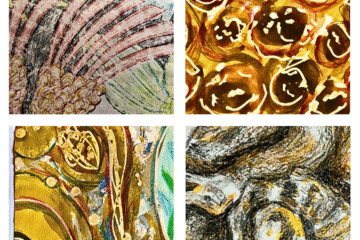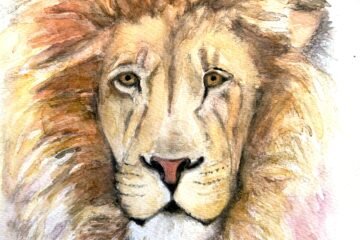Nature journals are documents that usually contain both illustrations and text and are inspired by the natural world. They may contain scientific information on species, or more simply, just contain personal observations. Fundamentally, they offer a way to understand the world in which we live.
The term journal implies that recordings are completed on a regular basis. However, nature journals do not need to be completed daily, as a diary would be. Nature journals can be added to as frequently as the author wishes.
What are the benefits of completing a nature journal?
It is widely publicised that spending time in nature has calming and therapeutic effects for the majority. So simply taking time out for yourself and going on a nature walk could be sufficient in order to reduce stress levels. What’s more, taking your nature journal with you on your walks will give you the opportunity to stop and appreciate your surroundings further. These are the core aims of mindfulness practice which promotes improved well-being.

Is nature journalling a new thing?
Nature journals are by no means a new fad. In fact, there has been a long-held human fascination with recording the natural world.
For example, cave paintings featuring images of nature have been found all over the world, the oldest dating back to around 40,000 years ago. In these ancient paintings, the cave artists have depicted animals that have been observed around them.

Botanical Illustrations have paved the way for modern nature journalling.
The desire to document and understand the natural world has continued throughout time. This is evident in ancient manuscripts which date back to the first century BC. In these manuscripts, floral images have been recorded for scientific purposes.
The scientific journals completed by the Greek physician Crateuas (111–64 BC) are thought to be the earliest recordings of botanical journals. Furthermore, Crateuas is often referred to as the father of botanical illustration.
Botanical illustrations have proven to be popular within many cultures. Furthermore, nature journalling could be considered to be a modern day alternative.
Ideas for developing a creative nature journal.
You are hopefully reading this article as you are wanting to start your own nature journal. However, you may be struggling to know where to start. There are lots of different creative ways in which you can produce a personal nature journal. You do not need to be an accomplished artist or even a botanical illustrator.
Detailed below are a few suggestions of creative ways in which to complete a nature journal which are suitable for all ability levels. It should be noted that there is no prescriptive way in which to complete your journal. You may undertake nature journalling in any way which suits you.

1. What can be used for your nature journal?
You may wish to simply purchase a blank journal or sketchbook. If so, please pay attention to the quality of the paper as artwork requires a good quality surface. Look for books which contain paper quality of around 300gsm.
Alternatively, you may wish to make your own journal. This could be achieved by adding hole punched paper to a ring binder. You could even make your own bound journal by using thick cardboard as a cover.
Which ever option that you choose, please consider the size of the journal. If you wish to take your journal with you on nature walks, then an A5 book would be the most practical.

2. Choose subjects that inspire you.
Beauty can be found in many forms. For example, the jewel-like colours of the ruby-tailed wasp inspired the glittery drawing illustrated here. So, subjects with good colouration can be very inspirational.
Furthermore, nature provides a rich source of subjects to inspire which can be found throughout the year.
Why not explore some of the following subjects: An acorn, a pinecone, a shell, a holly leaf, an autumn leaf, a teasel seed head, a poppy seed head, a wild mushroom, a spring flower, winter berries, a frosted spider web, mistletoe, a tulip, a summer flower, a bird, an insect.

3. Preserving leaves and flowers.
Adding leaves and flowers to your journal is a great idea. Not only does this create decorative effects, but it also provides inspiration for drawing.
So, you could try pressing and drying leaves and flowers. To do this, simply enclose the leaf or flower in absorbent paper and then add a weight on top. This could be a pile of books, for example. In about a week’s time, you will have a flat and dry object which can then be added to your journal.
Have you tried laminating an object? If you have a disused laminating machine lurking in a cupboard, this is the ideal time to dust it off and try it out again. Laminating dried leaves and flowers can be fun. You can also add decorative effects with coloured wool and stitch.

4. Experimenting with different drawing techniques.
When completing drawings for your nature journal, consider using different media. In the example illustrated here, coloured pens have been used expressively. Journals do not need to contain accurate and super realistic images. Instead, you can have fun creating loose and expressive effects with lots of different media.
Ideas that you could try include: using water-soluble pencils to create painterly effects, layering coloured pen to create different tones, using soft pastels or chalks and blending tones with a paper towel, ripping up old magazines and creating collage effects.

5. Creating different surfaces for your artworks.
Drawing directly on to a page can achieve excellent results. However, have you considered drawing on to different surfaces? In the example illustrated here, paint has been applied in a drizzled effect directly on to the journal page. To diffuse this, white tissue paper has then been glued over the top. The result is a lively and interesting surface on which to create expressive drawings.
You could also try gluing scrunched tissue paper in to your journal using PVA glue liberally. Once dry, try sanding back the tissue paper using a fine sanding paper. The result is then a lightly textured and interesting surface on which to draw.

6. Inspired by the written word.
A nature journal does not need to focus purely on it’s illustrations. Writing your thoughts and ideas about what you are observing are equally as important. You may also wish to add research about different species in order to learn more.
Furthermore, you may feel inspired to research nature-themed poetry or verse. The written word can often conjure up creative imagery in the mind which can then be recorded in your journal. You may also wish to write your own nature-themed poetry.
I hope that you will have as much fun and enjoyment completing your nature journal as I do. You can download this article plus other helpful tips, information and worksheets in my Nature Journalling Guide. Just scroll down to the end of this article to download.
If you are in need of further inspiration, then why not try one of my nature journalling courses. On my courses, I will fully demonstrate all of the techniques covered within this article and you will also have chance to see other nature journals for inspiration.
Simply click on the link to be directed to the relevant website page for more information creative well-being programmes.
Happy journalling!
Sharon



0 Comments